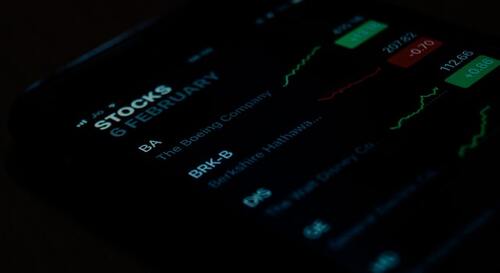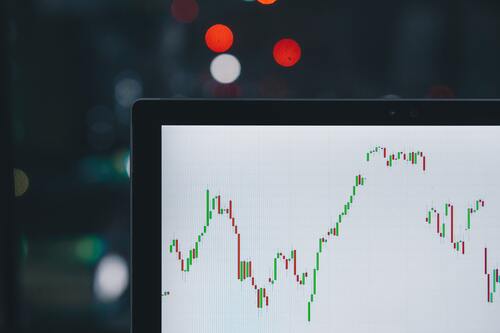P2P Income | A Comparison of P2P Lending and Stocks
Peer-to-Peer lending is a fairly new approach to investing. Peer-to-Peer lending is a concept where by a marketplace is constructed by a company or entity. The marketplace is formed so that everyday people may borrow and lend to one another. There are certain rules and restrictions for the purpose of protecting borrowers and lenders. The platforms also take a small fee from every transaction and install different financial mechanisms to ensure a profitable, comfortable experience.
There are also many legacy markets that one might prefer using as an investment vehicle. Such as, real estate, stocks, and government bonds - are all great ways to traditionally invest. These methods are tried and true and will provide you a decent return, and if done decently, not necessarily perfectly, these methods will bring you financial prosperity.
More specifically, in this guide we're going to take a look into stocks, and address the differences between investing in stocks and investing into peer-to-peer business lending.

We'll be doing so by identifying what it is that you actually purchase when you hold a stock. As well as, what it is you hold when you loan money to borrowers on a Peer-to-Peer lending platform. The reason why these details are important is because they are associated with the amount of money you're going to invest, the liquidity of the investment, as well as the level of risk. The risk you'll be undertaking is dependent on the type of investment you choose.
So what are stocks? Purchasing stocks is the same as purchasing an ownership interest or equity in a company. Stocks can only be purchased after private companies decide to go public and issue an initial public offering (IPO). The company can then offer the percentage of equity they wish to offer to the public at an evaluated price and it becomes traded on the stock market, such as the S&P 500.
How to Invest in Stocks
We highly advise dispensing with the idea of "stonks", wallstreetbets and GameStop(GME). Due to a market phenomena, many retail investors, mostly new ones, have been purchasing stock with the assumption that they will grow due to an artificial market demand. This approach to invest is untenable and harmful in the long run.
Purchasing a stock is buying an ownership interest in a company. The company should be in your subjective eyes a valuable company, and the time to purchase it would be at the time you find the cost to justify the price of the ownership interest.
Going by great investors like Warren Buffet, your greatest strength as an investor is the amount of time you have to invest. Even a humble portfolio with a humble gain over a very long period of time is an incredibly potent recipe for financial success. To achieve this financial success, there are multiple directions to take when investing in stocks. Mutual funds, ETF's, individual company stock, and they all represent different methods of investing in the stock market.
Mutual Funds
A mutual fund is purchasing a position in stock market that is comprised of little bits here and there of the stock market. Like the S&P 500 is a mutual fund and a representative of the American stock market.
Individual Stocks
Individual companies can be selected if you believe them to be long term companies with a good future. The best investments, generally speaking, are proven over a long period of time rather than short term gains.
ETFs
Short for exchange traded funds, these are similar to mutual funds with a key difference. A mutual fund is actively managed, whereas, an ETF is passively managed. This difference mostly manifests in the kind of assets found in the fund. ETF's will mostly like comprise of low risk assets whereas mutual funds may have a more diversified asset allocation.

Purchasing stocks can be done online, at your local stock market exchange or on brokerage sites. Traditionally, in order to start investing in stocks you would need at the very minimum 1000 USD. Even then, it may not be enough to see any real gains because of the fees associated with purchasing stocks. On average, the stock market has traditionally brought back 10% gains annually. Which means that it's a pretty safe place to put your capital but the market can crash, and depending on whether you selected mutual funds or single stocks, your portfolio can suffer major losses.
Generally speaking, the common advice for those who are interested in stocks is simply invest into an index, mutual fund or ETF. If you're considering investing in individual stocks it'll be a lot more difficult to choose the right one, but it is something to consider once you are more familiar with analyzing the stock market, evaluating price and possess financial literacy.
Many investors still find stocks to be a high risk and speculative. If you fit within the category you might be more interested in learning the difference between investing in peer-to-peer lending and real estate.
A Different Approach to Investing
Purchasing stocks is like purchasing a piece of ownership in a company. It's value is based off an evaluation of the company by the relevant financial authorities and then listed up as a publicly traded company.
There are rules and regulations to individual stocks which investors need to abide by. One person cannot manipulate a stock price for his own gain and insider trading is forbidden. You're purchasing a piece of a machine that creates a product which is profitable. That's the right way to think about purchasing stocks.
P2P Lending is different because you're not purchasing the actual business they might be funding, or wedding they might be planning. You're investing in your cash and the borrowers ability to pay it back. This is the essence of every loan contract.
The separation here between stocks and lending as a whole, exists in the nature of the transaction and those transacting. Peer-to-Peer lending differs from stocks at first with the barriers of entry. To invest in the stock market you need about a 1000 USD minimum. Not that a grand is a lot of money, but to the majority of the people around the world, it is.
Per the World Bank, 3.4 million people live under 5 USD a day. You can imagine how significant 1000 USD becomes when it finances your life for 200 days. Those who have no ability to grow their capital are stuck in a vicious, perpetual cycle of fiscal stagnation, while the rest of the world finds ways to climb on-wards.
Microfinance
Peer-to-Peer lending has become welcomed with open arms. Peer-to-Peer lending has investing options starting from 1 USD. This is because of a fancy concept we call microfinance.

Microfinance started off as a banking service for small business owners and unemployed individuals. They came as loans in small amounts of no more than a 100 USD issued by the bank for limited income borrowers. Around the world, banks and financial institutions recognized the change that was made by enabling limited income individuals to borrow a bit of capital. The world bank estimated that roughly 500 million borrowers benefited from microfinance.
Microfinance, is a key propagator of the success of Peer-to-Peer lending. This new concept will inevitably change the stock market. In order for the stock market to compete with the competition of this new asset class they will be forced to open the barriers of entry. Such actions have been already implemented in applications, and software such as Robinhood, who allows no fees stock investing and trading. Robinhood is currently only open to US investors.
The stock market is too centralized as it is now, as big hedge funds own too much of it and it is increasingly difficult to become profitable from the stock market. P2P lending is the democratizing call that the everyday consumer has yearned for.
Equity v. Debt
Equity has always had an obscure nature too it in financial statements. The nature of dividends, capital stock, the issuing of stock, all of these facets are part of a complex idea and are not an easily understood. Rather than breaking down the complexities of equity, we will discuss the differences between investing into equity and debt.
Those who are invested in equity are also those who take upon themselves the entire risk of ownership of the company.
In the case of a company going bankrupt, debt is the first asset that is covered. If a company goes bust, the debt must be paid back. But for the equity investor, if the company goes bust, the equity investor sees nothing. This is directly related to the idea of risk vs reward. A business that takes a loan may be able to pay an interest rate of, let's say, 10 percent.
Example a. Debt
If Gary lends Tommy's business 1000 USD, then Tommy's business has to make sure to pay Gary 1100 USD by the time loan the contract ends.
But an equity investor, if all goes well, will see much higher gains than just 10 percent.
Example b. Equity
If Gary invests into Tommy's business 1000 USD and Tommy's business shortly expands and doubles in value, then Gary's investment value becomes 2000 USD. Though it may, as it depends on the contract, and Gary can now sell that investment to whomever he wants.
The lender is always paid back his capital, including interest. The equity investor, because he takes upon himself all the risk, has the potential to exponentially increase his principal or completely lose it.
It also helps to understand what kind of companies may opt for equity to fund their businesses or debt. For example, small companies that are just starting out are most likely not going to be funded through loans or debts. In order for a business to apply for a loan they must be in operation for a considerable amount of time, enough to justify a predictable amount of income.
This means the more junior the company the less likely it will be requesting a loan. In general, all the businesses that you may invest through equity or lending should be done with so with the highest degree of scrutiny. But,, know that most platforms also vet their borrowers to ensure that they are historically capable of paying off their liabilities.
It's important to understand that lending out money to businesses is safer, in terms of investment, than investing into the equity of the company. Because the highest risk is the company going bankrupt. If you lent the business money you will most likely see your money returned. If you invested into ownership, you may lose all of your capital. If lending to businesses is something that peaks your interest you can find out more in our guide on investing into businesses with Peer-to-Peer lending.
Verdict
Would you rather fund a business and be paid back or own a business? The answer depends on the level of risk you're willing to undertake. As an investor you should always do your own research. If someone tells you with absolute certainty what to invest in they most likely do not have your best interest at heart.
Both Peer-to-Peer lending and stocks have their draw backs and strengths. But objectively, it is safe to say that debt investing will be less risky for your principal than investing into equity.
Key Take-Aways
- Companies are required to pay back debt but not equity. Investing in business loans is less risky than investing in business equity
- Stocks represent an ownership interest in a company
- Stocks should be representative of a company's value and not speculation
- Peer-to-Peer lending is a low risk alternative to stocks with a comparative interest rate
- Indexes are great investments for consistent returns on the stock market
- Investing in the stock market is more speculative than investing into P2P
- Business loans are only relevant to companies with a proven track record
